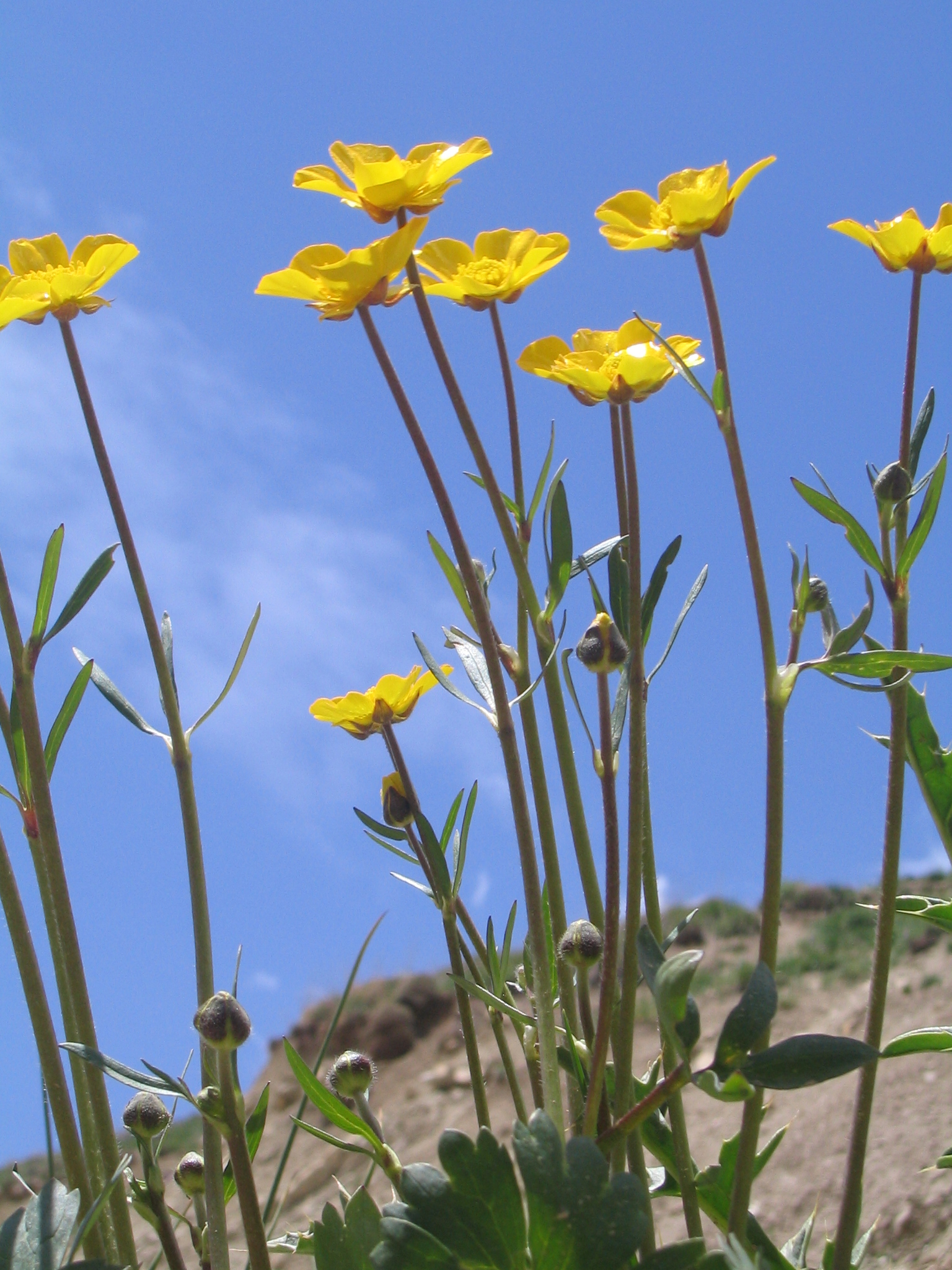Photo : Ranunculaceae
Province:
TehranAdditional Information:
Description:
Ranunculaceae are mostly herbaceous plants, but with some woody climbers (such as Clematis) and subshrubs (e.g. Xanthorhiza). Flower diagram of Adonis autumnalis from Strasburger et al. 1900 Members of the Ranunculaceae usually have five colored sepals instead of petals (except buttercups), and divided leaves and nonwoody tissue (except clematis). [1] Leaves are usually divided or lobed, but are heart-shaped or narrow and undivided in some species of Ranunculus, and usually arise from the base of the plant, or alternately up the stem, but in Clematis they are opposite. Perennial species form small rhizomes or tubers which develop new roots each year. Flowers may be solitary, but are frequently found aggregated in cymes, panicles, or spikes. Many species have no true petals, and the 'flower' is formed by a brightly colored group of sepals called a calyx. There are usually five sepals per flower, though they come in a wide variety of shapes. Ranunculus (buttercups) is the only genus in this family with a true calyx and petals. There are many stamens surrounding many fused carpels. The fruit is most commonly a follicle (e. g. Helleborus, Nigella) or an achene (e. g. Ranunculus, Clematis). Ranunculaceae contain protoanemonin, which is toxic to humans and animals. Other poisonous or toxic compounds, alkaloids and glycosides, are also very common
Download this photo